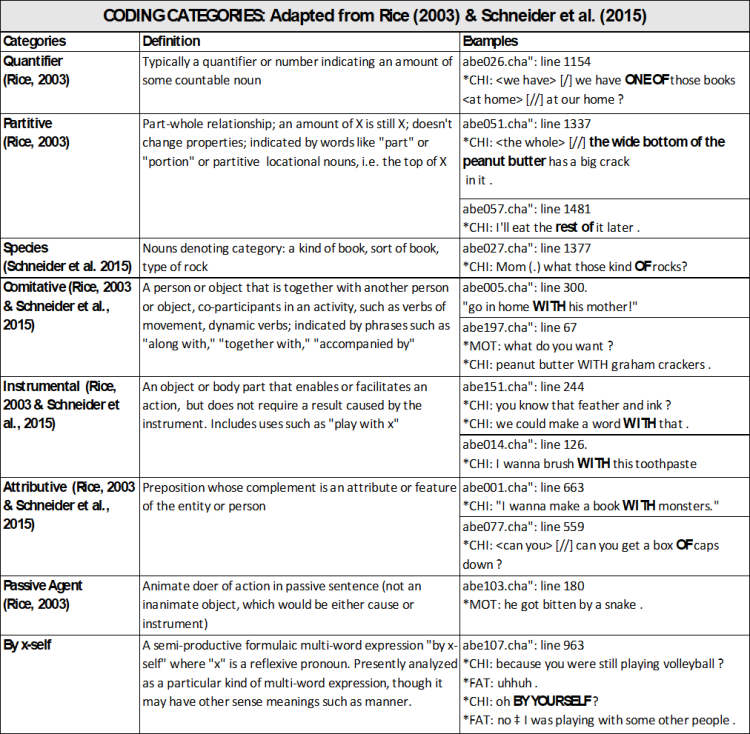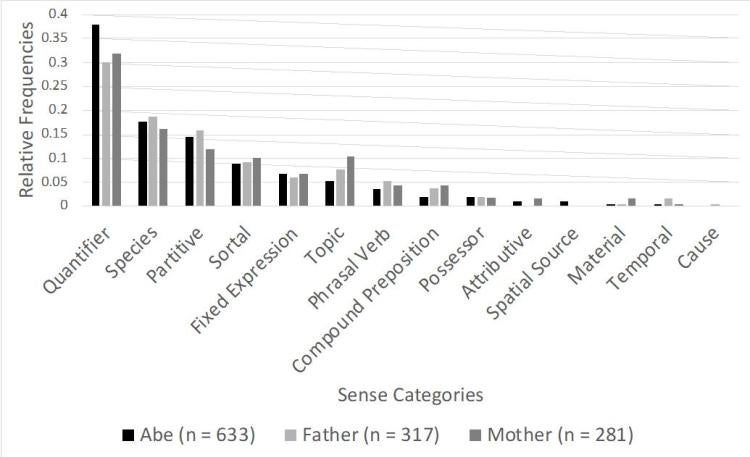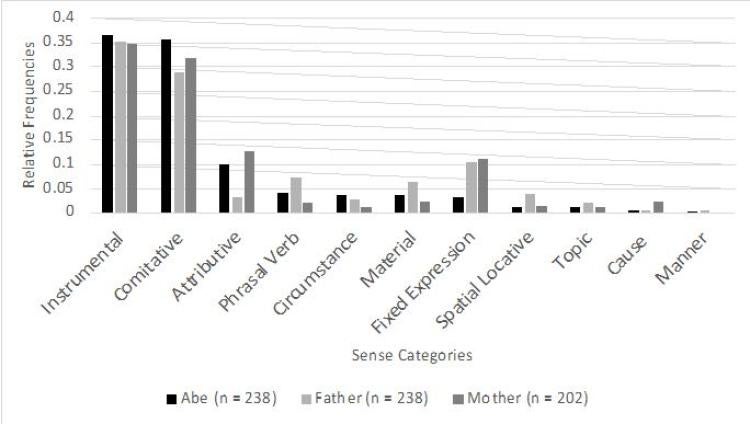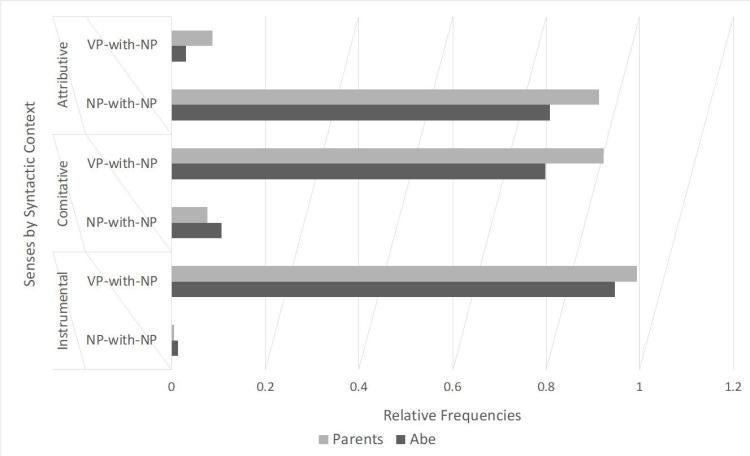A Child's Acquisition of Polysemy: "of", "with", and "by" in Child English
How do children learn words without "seeing" them in the real world?
By Megan Pielke
Lab: Language, Development and Cognition Lab
Advisor: Norielle Adricula
LURA 2019
Prepositions differ from other parts of speech in that they cannot be “seen” in the real world. They are used to mark and indicate relationships and are less tangible than concrete nouns or verbs, which point out objects or actions that we can see. In English, prepositions are highly polysemous, meaning that the same word can have different meanings, uses, and senses. Given these factors, how do children acquire these elusive terms in their everyday speech?
To tackle this question, we analyzed a longitudinal corpus of data (a collection of language data over time) of naturally occurring, spontaneous interactions of one child and his two primary caregivers (mother and father). We examined the usage patterns of prepositions for the child and his parents to determine whether caregiver input influenced the child’s acquisition and subsequent production of these prepositions. A number of studies have examined the prepositions on and in due to their prevalence in everyday speech; however, this project primarily focused on the less-frequent and less-studied prepositions of, with, and by.
In order to examine this question, we annotated examples of the prepositions of, with, and by from the aforementioned longitudinal corpus, targeting the senses in which they are used, the grammatical structures in which they occur, and the nouns and verbs that co-occur with each preposition. Below are examples of the annotation coding scheme used in this project. We annotated the data for the child, his mother, and his father in order to analyze the role of caregiver input on the production of the child.

Overall, we found that caregiver frequency and type of use were reflected in the child's production of two prepositions: of and with. The graphs below demonstrate this pattern.

Figure 1. Overall relative frequencies of of-senses across production and input

Figure 2. Frequent co-occurring semantic elements for frequent of-senses.

Figure 3. Overall relative frequencies of with-senses for Abe and his parents.

Figure 4. Prototypical syntactic contexts for most frequent with senses
The production of the preposition by was relatively infrequent compared to the other two prepositions considered in this study. Additionally, the child used the preposition by differently in comparison to his caregivers (i.e. mother and father).
When considering the prepositions of and with, we found that the input frequencies of preposition sense and syntactic contexts are highly correlated with these same variables in the child’s production. The results of this study suggest that caregiver input may play an important role in the acquisition of these senses of prepositions.
This study is part of a larger project that examines how children acquire functional words – words that are small but important! For more information on this and other related studies, please contact Norielle Adricula (norielle.adricula@colorado.edu) or Megan Pielke (megan.pielke@colorado.edu) and check out our article on this study coming out in BUCLD 43!
Opening Photo Credit
https://st.depositphotos.com/2087445/2349/v/600/depositphotos_23498015-stock-video-doting-parents-and-child-playing.jpg

